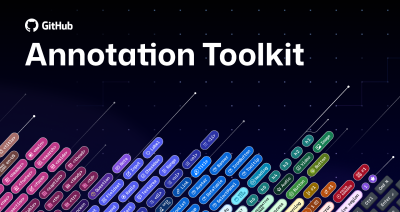See how Scalable Open Architecture For Embedded Edge (SOAFEE), an industry-led collaboration between companies across the automotive and technology sectors, is working to radically simplify vehicle software solutions.
GitHub Actions, Arm64, and the future of automotive software development
Learn how GitHub’s Enterprise Cloud, GitHub Actions, and Arm’s latest Automotive Enhanced processors, work together to usher in a new era of efficient, scalable, and flexible automotive software creation.

Automotive software development moves to the cloud
We are at an inflection point for automotive embedded development to move to the cloud. In an era where software has not just eaten the world but is continuously redefining it through AI, the cloud emerges not just as a platform but as the foundational fabric for software engineering. With AI’s increasing demand for computational power driving unprecedented changes in silicon, both at the edge and in the cloud, the need for agile, scalable, and continuously optimized development environments has never been more critical. As the home of the world’s developers, GitHub is the platform to build the next generation of automotive and embedded development environments in the cloud.
Traditional embedded development challenges
Improving the developer experience is at the heart of what GitHub does. We’re dedicated to making coding as smooth as possible by reducing unnecessary complexity. The traditional process for developers working with embedded systems has plenty of friction to remove. Historically, software development has been very hardware-dependent with developers maintaining some combination of test hardware connected to their development machines or an in-house testing farm. There weren’t many alternatives because so much was proprietary.
In recent years, a series of technical advancements have significantly influenced the foundational architectures within the field. Despite these changes, many traditional methods and operational processes remain in use. Key developments include the adoption of more powerful multipurpose processors, the establishment of open standards for the lower-level software stack such as SOAFEE.io for cloud native architecture at the edge, and the increased reliance on open-source resources, facilitating reuse across different domains. These innovations have provided developers with the opportunity to fundamentally rethink their approaches to development, enabling more efficient and flexible strategies.
As the rate of these technical trends and foundational change increases, teams are finding it increasingly difficult to deliver application commitments without significant cost of maintaining these in-house development and test environments.
Virtualization for embedded and automotive development
While virtualization has become a cornerstone of enterprise development, its integration into embedded systems has proceeded at a more cautious pace. The complexities inherent in embedded systems—spanning a vast array of processors, operating systems, and specialized software—pose unique challenges not encountered in the more homogeneous environments of data centers and IT networks. Embedded systems require a nuanced approach to virtualization that goes beyond simply accommodating mainstream operating systems like Windows and Linux on standard Intel architectures.
In a significant development that reflects the evolving landscape of embedded systems, in March 2024, Arm unveiled its new Automotive Enhanced (AE) processors. These cutting-edge processors are designed to boost AI capabilities within the automotive sector, ensuring ISA (Instruction Set Architecture) compatibility. This advancement is poised to revolutionize the way applications are developed and deployed, enabling developers to create software in the cloud and seamlessly transition it to the edge, such as in vehicles, without the need for extensive reconfiguration or modification. This leap forward promises to accelerate the time-to-market for new applications, bridging the gap between cloud development environments and the nuanced world of embedded systems .
This transition exemplifies how advancements in processor technology and virtualization are converging to address the unique challenges of embedded development, paving the way for more integrated and efficient systems across industries. Developers will be able to write, build, and test code in the cloud and then run their applications in virtualized environments with digital twins that mirror their processor targets, even if those targets haven’t even been delivered in the silicon.
Cloud-based continuous integration platform
Continuous integration (CI), a cornerstone of agile methodologies for over two decades, automates the build, test, and deployment processes. This automation accelerates feedback loops, enabling timely verification that the software meets the intended requirements. It also minimizes integration risks and enhances the early detection of defects and security vulnerabilities. While surveys indicate that many embedded development teams have adopted CI as a practice, managing the development environments across multiple hardware configurations and deployment targets is costly and complex.
Implementing CI/CD in a cloud environment leverages the well-established advantages of cloud computing for embedded engineering teams, significantly enhancing their ability to deliver high-quality products within tight market timelines.
- Enhanced Scalability. Cloud-based CI allows teams to dynamically allocate resources and optimize compute spend. Teams can execute workloads in parallel in order to support multiple hardware and software configurations simultaneously. Developers can also participate across geographic regions or even across organizational boundaries within the supply chain.
- Reduced Complexity. Standardizing on cloud-based CI reduces environment setup and tear down times and promotes consistency. Workflows can easily be shared across teams.
- Improved Quality. When compute resources are too constrained or managing the CI environment is brittle, teams may optimize locally onto too narrow a piece of the development. Reducing this friction and thereby increasing the end to end feedback loops can improve quality.
To deliver cloud-based embedded developer environments for the design and build time that feed into the runtime virtualized and simulated targets, GitHub needed to update our infrastructure. In October 2023, GitHub announced native Arm64 support for our hosted CI/CD workflow engine, GitHub Actions. Supporting this platform is important because Arm’s family of processor designs are central to many uses in the embedded and automotive world.
This promises to free embedded developers from being tied to the desktop. By moving jobs to the cloud, development teams will be able to focus more on coding time and less on infrastructure management. We also recently announced the public beta of GPU hosted runners that will enable teams building machine learning models to do complete application testing, including the ML components within GitHub Actions.
Conclusion
The convergence of cloud technologies, advanced virtualization, and cutting-edge processor innovations represents a transformative shift in automotive software development. To further advance and support these transformations across the industry, GitHub has recently joined SOAFEE.io, as well as maintaining our membership in the Connected Vehicle Systems Alliance (COVESA) and supporting Microsoft’s commitment to the Eclipse Software Defined Vehicle project.
GitHub Enterprise Cloud, along with Arm’s latest AE processors, heralds a new era where development and testing transcend traditional boundaries, leveraging the cloud’s vast resources for more efficient, scalable, and flexible software creation. This paradigm shift towards cloud-based development and virtualized testing environments not only addresses the complexities and limitations of embedded system design but also dramatically reduces the overhead associated with physical hardware dependencies. By enabling developers to seamlessly transition applications from the cloud to the edge without extensive rework, the automotive industry stands on the brink of a significant acceleration in innovation and time-to-market for new technologies.
GitHub’s introduction of native Arm64 support and the public beta of GPU hosted runners on its CI/CD platform, GitHub Actions, further underscores this transition. These advancements ensure that the embedded and automotive development communities can fully harness the cloud’s potential, facilitating a shift from local, hardware-constrained development processes to a more agile, cloud-centric approach. As a result, developers can focus more on innovation and less on the intricacies of hardware management, propelling the automotive sector into a future where software development is more integrated, dynamic, and responsive to the rapidly evolving demands of technology and consumers. This transition not only signifies a leap forward in how automotive software is developed but also reflects a broader trend towards the cloud as the backbone of modern software engineering across industries.
Learn more about GitHub-hosted runners and look for the public beta for Arm-hosted runners coming later this year.
Tags:
Written by
Related posts

Level up design-to-code collaboration with GitHub’s open source Annotation Toolkit
Prevent accessibility issues before they reach production. The Annotation Toolkit brings clarity, compliance, and collaboration directly into your Figma workflow.

How to use the GitHub and JFrog integration for secure, traceable builds from commit to production
Connect commits to artifacts without switching tools.

How to streamline GitHub API calls in Azure Pipelines
Build a custom Azure DevOps extension that eliminates the complexity of JWT generation and token management, enabling powerful automation and enhanced security controls.